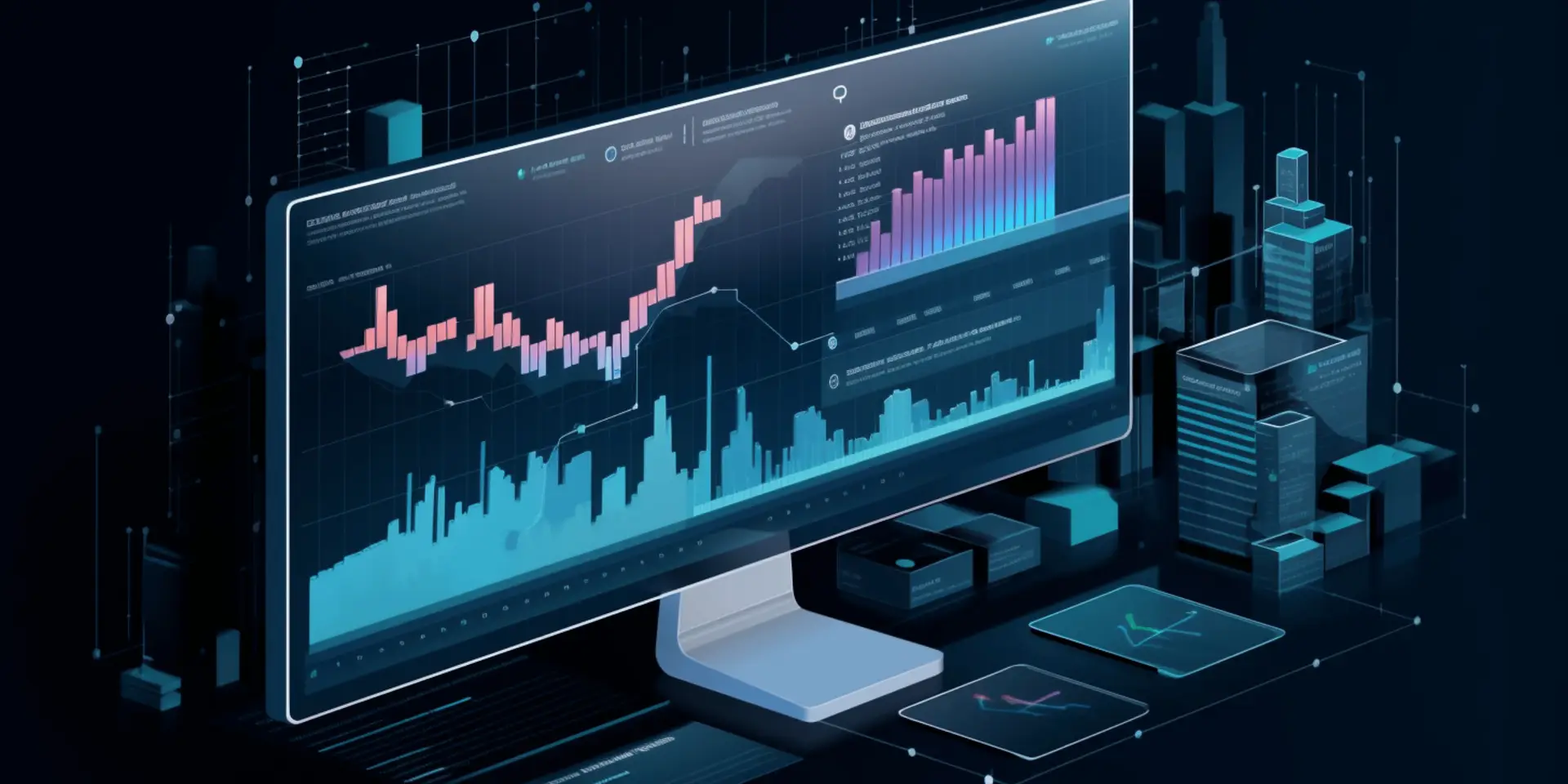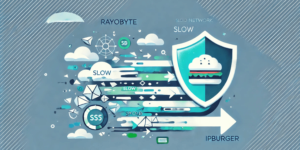Ever wondered how some businesses seem to always be a step ahead with their pricing and product strategies? Here’s a hint: they’re not just sitting around waiting for the next best thing to happen. They’re scraping Amazon. But not just any scraping—these folks are doing it in stealth mode.
Amazon? It’s no joke. Their anti-scraping defenses are tight. One wrong move, and you’re blocked faster than you can say “add to cart.” So, how do the smart ones get away with it? They use residential proxies.
These little tools let you slip by unnoticed, like blending into a crowd of online shoppers. The difference? You’re collecting data that helps you crush the competition.
In this guide, we’re going to walk you through the best practices to scrape Amazon without getting caught. Because, let’s face it, no one likes a ban.

Why Scraping Amazon is Tricky (and Why It’s Worth It)
Let’s get this straight: Amazon isn’t too fond of web scrapers. They’ve got a whole system in place to catch and block you. Rate limits, CAPTCHAs, IP blacklisting—Amazon doesn’t mess around when it comes to protecting its data. They know businesses would love nothing more than to scrape product listings, pricing, and reviews to stay ahead of the game.
So, why bother?
Because data is power. And for e-commerce businesses, Amazon is the holy grail of data. From tracking price fluctuations to monitoring competitor stock levels and analyzing customer reviews, scraping Amazon can give you invaluable insights. You get the info you need to optimize your listings, adjust your pricing strategy, and improve your customer experience. The key? Doing it without raising any red flags.
And that’s where residential proxies step in. They make you look like a regular user—not a bot or a scraper. But we’ll get to that in a bit. First, let’s talk about Amazon’s defenses and why you need to be extra careful.
How Amazon Detects and Blocks Scrapers
Amazon has built an impressive fortress when it comes to data protection. They use several techniques to detect and block scrapers, and if you’re not careful, you’ll be caught in their net. Here’s a breakdown of the key defense mechanisms they employ:
1. Rate Limiting
Amazon monitors how many requests an IP address sends in a short time. Scrapers tend to make more requests than a normal user, so if you go over a certain threshold, your IP gets flagged or temporarily blocked.
2. CAPTCHAs
Ah, CAPTCHAs. They exist to tell if you’re human or machine. If Amazon suspects unusual behavior, it throws one of these at you to ensure it’s not a bot. Bots, especially basic ones, struggle to handle CAPTCHAs, which ends scraping attempts right there.
3. IP Blacklisting
If Amazon notices repeated suspicious activity from the same IP address, they blacklist it. That means no more access from that IP—even for normal browsing. It’s a tough penalty that can seriously disrupt your scraping Amazon operation if you’re not prepared.
4. Fingerprinting
This one’s sneaky. Amazon can track details like your browser version, operating system, and even the type of device you’re using. If the same setup is making multiple requests, it’s a red flag.
5. User-Agent Scrutiny
Your user-agent string tells Amazon what browser you’re using. If you’re trying to scrape using an outdated or obviously fake browser string, Amazon is going to notice.
6. Cookies and Session Tracking
Amazon tracks cookies and session data to keep an eye on user behavior over time. Suspicious or erratic activity linked to these sessions can lead to blocks.
All these defenses make scraping Amazon a challenge—but not impossible. With the right tools and tactics, you can still gather data without triggering alarms. And that’s where proxies come in handy, especially residential proxies, which mimic real user behavior. We’ll dive into that next.
Why Residential Proxies Are Essential for Scraping Amazon
Let’s be honest—Amazon’s anti-scraping defenses are no joke. To gather data without getting your IP flagged, you need something that makes you look like a regular user, not a bot. That’s where residential proxies come into play.

What makes them special?
Residential proxies give you an IP address that looks like it belongs to an average person, not some faceless data center. These are actual IPs assigned by Internet Service Providers (ISPs) to homeowners. Essentially, when you use a residential proxy, you’re blending in with the crowd.
Bypassing IP Blacklists
Amazon regularly updates its blacklist, cutting off access to IPs that have suspicious patterns. If you’re using a standard proxy, especially a datacenter one, you’ll stick out like a sore thumb. Residential proxies, though? They’re much harder to detect because they mimic real, everyday users.
Rotating Proxies to Stay Stealthy
Residential proxies can rotate, meaning you’re not stuck using the same IP for every request. By cycling through different IP addresses, you can stay under Amazon’s radar. Think of it like this: instead of making 1,000 requests from a single IP (which screams “bot”), you make 1,000 requests from 1,000 different IPs. Much harder to trace.
Defeating Fingerprinting
Remember Amazon’s fingerprinting tricks? Residential proxies help with that too. The proxies connect through real devices with unique characteristics, so Amazon can’t tie your browsing to suspicious patterns.
Avoiding CAPTCHAs
While proxies don’t outright block CAPTCHAs, residential proxies help reduce the chances of triggering one. By making you appear as a legitimate user, Amazon is less likely to think you’re a bot and won’t throw as many CAPTCHAs your way.
Residential proxies aren’t just a bonus—they’re essential for scraping Amazon data without getting blocked. They help you avoid blacklists, reduce CAPTCHA triggers, and keep your IP looking clean and real.
How to Set Up Residential Proxies for Amazon Scraping with IPBurger
Using IPBurger makes setting up residential proxies for Amazon scraping super easy. Let’s break it down step by step, so you can get started quickly and avoid getting blocked by Amazon.
Step 1: Sign Up with IPBurger
Head to IPBurger and sign up for a residential proxy plan. IPBurger offers rotating residential proxies, which is crucial for scraping Amazon without raising red flags. Once signed up, you’ll receive the credentials needed to connect your scraping tool to the proxies.
Step 2: Plug Your Proxies Into Your Scraper
Whether you’re using Python or a no-code scraping tool like Octoparse, integrating IPBurger proxies is simple. Here’s how you’d do it in Python using requests:
import requests
proxies = {
"http": "http://username:password@proxy_ip:proxy_port",
"https": "https://username:password@proxy_ip:proxy_port",
}
response = requests.get("https://www.amazon.com", proxies=proxies)
print(response.text)Replace username, password, proxy_ip, and proxy_port with the actual details IPBurger provides.
Step 3: Rotate Proxies Automatically
IPBurger’s residential proxies automatically rotate, so you don’t have to worry about getting blocked for too many requests from the same IP address. This feature ensures each request comes from a new IP, making it harder for Amazon to detect you.
Step 4: Test the Setup
After configuring your scraper, send a few test requests to make sure everything works smoothly. If you notice any blocks or CAPTCHAs, simply rotate the proxy or tweak the request rate.
Step 5: Monitor and Adjust as Needed
Amazon’s systems are smart but with IPBurger’s rotating proxies, you’ve got a strong defense. If you ever hit a wall, just adjust your settings and rotate proxies more frequently.
Using IPBurger’s residential proxies means less hassle and more success when scraping Amazon data. It’s like having a stealth mode for your scraping activities. Want to dive in? Start with IPBurger and make scraping smoother than ever.
Best Practices for Scraping Amazon Without Getting Banned
Even with IPBurger’s proxies, Amazon has robust systems in place to detect unusual activity. To avoid getting flagged or banned, it’s important to follow best practices when scraping their data.
1. Avoid Overloading Amazon’s Servers
One of the quickest ways to get blocked is sending too many requests too fast. Scrapers that act like robots trigger red flags. To avoid this:
- Slow Down Your Request Rate: Aim for human-like speeds. Sending requests too quickly can make it obvious you’re scraping. Instead of flooding Amazon with requests, space them out.
- Randomize Your Request Timing: Use intervals to create a more natural pattern. For instance, random delays between 2-7 seconds make it harder for Amazon to detect bot activity.
2. Rotate Proxies Regularly
Even though residential proxies are harder to detect, using the same IP for too many requests will still get you banned. Make sure to:
- Use IP Rotation: IPBurger’s residential proxies rotate automatically, but it’s always smart to check that your scraping tool is leveraging this feature. Rotate your proxies with every request, or at least every few minutes.
3. Rotate User Agents
Proxies aren’t the only thing Amazon tracks. The browser’s User-Agent (the string of data that identifies your browser) can be used to detect bots too. Make sure you:
- Change User-Agents Frequently: Use a variety of common User-Agent strings like Chrome, Firefox, Safari, etc. Randomizing this information will further reduce the chances of getting flagged.
4. Handle CAPTCHAs with Care
Amazon often throws up CAPTCHAs when it detects suspicious activity. If you get hit with a CAPTCHA:
- Use CAPTCHA Solvers: There are tools that can automatically solve these CAPTCHAs. Or, if your scraping rate is too high, try slowing down the number of requests to reduce the chances of getting a CAPTCHA in the first place.
5. Scrape During Low-Traffic Hours
Websites are more vigilant during peak hours. Consider scraping during off-peak times when Amazon’s servers are less crowded:
- Avoid Scraping During Business Hours: Opt for late-night scraping or early mornings when fewer users are active. This minimizes the chances of detection as fewer real users are active.
6. Avoid Scraping Logged-In Pages
Stay away from trying to scrape logged-in pages. Amazon’s detection is even sharper when you’re logged in:
- Stick to Publicly Available Data: By focusing on non-authenticated, public-facing pages, you reduce the risk of raising red flags.
7. Use Residential Proxies Consistently
Residential proxies are essential for staying under Amazon’s radar, but not just any proxy will do:
- Use Only High-Quality, Trusted Proxies: IPBurger’s residential proxies are a solid option because they mimic real users and reduce the risk of getting flagged.
Staying under the radar while scraping Amazon isn’t impossible, but it requires a thoughtful approach. Follow these best practices, and with IPBurger’s residential proxies, you’ll have a far better chance of getting the data you need — quietly and safely.
Proxy Rotation Strategies
When scraping Amazon, using a single IP for multiple requests can raise red flags. To keep your activities under the radar, employing effective proxy rotation strategies is crucial.
1. Randomized IP Rotation
Rotating IP addresses after each request or session is one of the most effective methods to minimize detection. By frequently changing your IP, you make it harder for Amazon to track your scraping activity.
- How It Works: Instead of sticking with one IP, configure your scraping tool to switch IPs randomly. This way, each request appears to come from a different user, making your actions look more legitimate.
2. Geo-Targeted Scraping
Different Amazon sites (like Amazon US vs. Amazon UK) may have different content or pricing. Changing proxies based on geographical regions allows you to access localized data while avoiding restrictions.
- The Strategy: Use proxies located in the target country. This not only helps with data relevance but also reduces the likelihood of detection. If you want to access Amazon UK, for instance, use a proxy based in the UK.
3. Managing Request Frequency
Amazon has a tolerance level for requests, and exceeding this can lead to bans. Adjusting the frequency of your requests based on proxy performance and Amazon’s sensitivity is essential.
- Balancing Act: Monitor the response times and performance of your proxies. If you notice a slowdown or increased CAPTCHA challenges, it might be time to slow down your scraping speed.
4. Additional Strategies
Incorporating a mix of other strategies can enhance your effectiveness further. For example, using session persistence for certain tasks can keep the connection stable while switching IPs.
For more detailed insights into proxy rotation strategies, check out this article from SmartProxy that explains various methods and their effectiveness.
Employing these proxy rotation strategies will help you scrape Amazon without raising alarms, making your data collection process smoother and more reliable.
Avoiding Captchas While Scraping
Ah, CAPTCHAs. The ultimate mood killer when you’re trying to scrape Amazon data. Here’s how to dodge them and keep your scraping game strong.
How Captchas Are Triggered
Several triggers can lead to those annoying CAPTCHAs:
- Too Many Requests: If you’re firing off requests like a machine gun, Amazon will catch on. Limit your requests. Play it cool.
- Inconsistent User Behavior: Browsing like a robot? Bad idea. If your actions don’t mimic real human behavior—like rushing through pages—you’ll raise red flags.
- Single IP Usage: Sticking to one IP for all your requests? Recipe for disaster. Mix it up! Rotate those IPs to stay under the radar.
Captcha-Solving Services
When CAPTCHAs strike, it’s time to bring in reinforcements:
- Choose a Service: Services like 2Captcha or Anti-Captcha can swoop in and save the day. They’ll solve those pesky CAPTCHAs for you.
- Integration: Most scraping tools play nice with these services. Set it up so your scraper sends CAPTCHA challenges to the service. Easy peasy.
- Automation: The best part? You can automate the whole process. No need to hit pause when a CAPTCHA pops up.
Monitoring IP Reputation
Keep your IP reputation in check to stay clear of CAPTCHAs:
- Use a Proxy Service: A solid proxy service offers tools to monitor your IP. By rotating IPs, you’ll avoid detection.
- Track Request Patterns: Watch your scraping habits. If CAPTCHAs are popping up more frequently, adjust your request rate or rotate IPs.
- Monitor Block Lists: Check if your IP is on any public block lists. Tools like MXToolbox can help you with that.
So, dodge those CAPTCHAs with these strategies. A little prep goes a long way in keeping your scraping efforts smooth.
Scraping Tools and Bots That Work Well with Proxies
When it comes to scraping Amazon data efficiently, having the right tools is crucial. Here are some top picks that work seamlessly with proxies, including IPBurger’s Web Scraping API.

Scrapy
Scrapy is a powerful and widely-used web scraping framework. It’s flexible and easy to use. Here’s why it’s a favorite:
- Framework Features: Scrapy allows you to build spiders that crawl websites and extract data. It supports asynchronous processing, making it fast and efficient.
- Proxy Compatibility: Integrating proxies into Scrapy is straightforward. Simply configure your settings to include your proxy details, and you’re set. This helps in masking your IP and avoiding bans.
For a comprehensive guide on Scrapy and how to use it with proxies, check out Scrapy Documentation.
BeautifulSoup and Selenium
BeautifulSoup is a library that makes it easy to scrape information from web pages. It’s user-friendly and great for beginners. You can parse HTML and XML documents and extract data with minimal effort.
Selenium is perfect for scraping dynamic websites that load content with JavaScript. It mimics a real browser, allowing you to interact with web elements.
Using Proxies with BeautifulSoup and Selenium:
- BeautifulSoup: When using BeautifulSoup, you can pair it with requests or urllib to set up proxy configurations. Just include your proxy settings in your request.
- Selenium: For Selenium, you can set up a proxy in the browser options when you initiate the driver. This way, all your interactions will go through the proxy, keeping your scraping activities under the radar.
IPBurger’s Web Scraping API
To simplify your scraping process even further, consider using IPBurger’s Web Scraping API. Here’s how it helps:
- Easy Integration: The API allows you to easily integrate with your existing scraping tools, whether it’s Scrapy, BeautifulSoup, or Selenium. It automates proxy rotation and management.
- Robust Proxy Pool: With IPBurger, you get access to a vast pool of residential proxies, ensuring that you can scrape data efficiently without running into IP bans.
- Reliability: The API is designed for high performance, providing you with fast and reliable connections, crucial for scraping large volumes of data.
For more information about IPBurger’s Web Scraping API and how to get started, check out IPBurger’s API Documentation.
Source for Web Scraping Tools
For an overview of various web scraping tools, including their strengths and compatibility with proxies, refer to this article from Towards Data Science. It provides a comprehensive look at popular scraping tools and their functionalities.
In conclusion, using the right scraping tools along with effective proxy strategies, including those offered by IPBurger, can greatly enhance your web scraping efforts, especially when targeting data from Amazon.
Potential Legal Considerations
When scraping Amazon, it’s essential to be aware of the potential legal pitfalls. Here are a couple of key considerations:
Terms of Service Violations
Scraping data from Amazon could violate their Terms of Service (TOS). This means that Amazon might take action against your account or block your IP. Businesses should be mindful of these risks. It’s not just about getting data; it’s about how you get it.
Fair Use of Data
There are also ethical and legal questions regarding how you use the data once you’ve scraped it. Just because you can get the data doesn’t mean you should use it in any way you want. Understanding the legalities around data use is crucial for businesses.
For a detailed look at the legal aspects of web scraping, check out this comprehensive resource from the Electronic Frontier Foundation.
Conclusion
Scraping Amazon data can be a game changer for e-commerce businesses and marketers. It opens up a treasure trove of insights. However, navigating the challenges is key.
Using high-quality residential proxies, like those offered by IPBurger, can help you stay under the radar and avoid bans.
Ready to level up your scraping game? Try IPBurger’s residential proxies for efficient and secure Amazon scraping. It’s time to get data the smart way.
FAQs
1. Is scraping Amazon data legal?
Scraping Amazon data can violate their Terms of Service, which may result in penalties like account suspension. However, legal interpretations vary by jurisdiction. It’s essential to familiarize yourself with both Amazon’s TOS and the legal landscape in your area to avoid potential issues. For further guidance, consult resources like the Electronic Frontier Foundation.
2. How can I avoid getting banned while scraping?
To avoid bans when scraping, use high-quality residential proxies that mimic real user behavior. Implementing techniques such as rotating IP addresses, managing request frequency, and avoiding captcha triggers are also critical strategies. Consistent monitoring of your scraping activities can help identify and address any issues before they lead to bans.
3. What are the best tools for scraping Amazon data?
Popular tools for scraping Amazon data include Scrapy, BeautifulSoup, and Selenium. These tools can be easily configured to work with proxies, enhancing your scraping efficiency. Each tool has its strengths: Scrapy for large-scale projects, BeautifulSoup for HTML parsing, and Selenium for dynamic content scraping.



